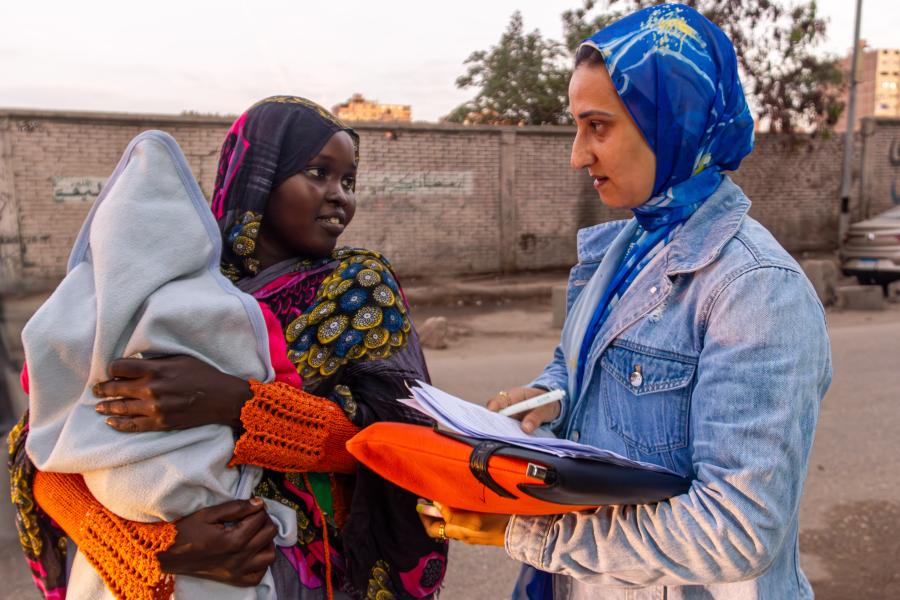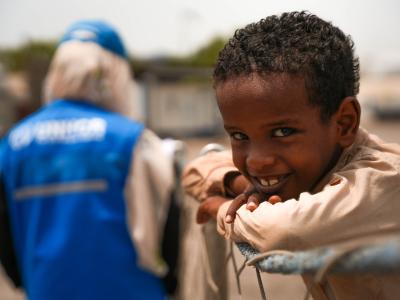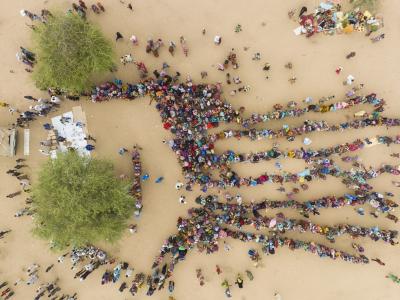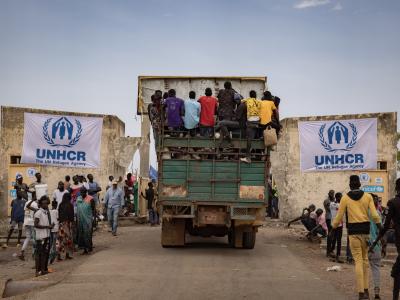In 2023, more than 122 million people found themselves needing international protection, stateless, or seeking safety from conflict, violence or serious public disorder in their own country.
The global refugee population grew by 2.8 million to 37.4 million and a record 6.86 million people were still seeking asylum at the end of the year, 26% more than at the end of 2022. Conflicts in Sudan, the Democratic Republic of the Congo (DRC) and Myanmar and violence in Haiti were among the major drivers of new displacement, and 63.3 million people ended the year displaced in their own country, an increase of 5.9 million from 2022.
Many of the countries showing most openness to refugees in 2023 were those already struggling with their own economic or political fragility.
People seeking international protection need to be able to access asylum procedures. UNHCR operations in 75 countries reported on the numbers who were able to do so in both 2022 and 2023. The proportion declined in 17 of those countries in 2023 but improved in 14.
Globally, asylum processing appeared to speed up slightly, with an average of 432 days required to process each claim, compared to 489 days in 2022.
In 2023, 86 countries out of 102 reported that more than 75% of refugees and asylum-seekers were able to move freely within their country of residence, similar to 2022.
Deportation and refoulement of asylum-seekers and refugees remain a key concern in all regions. Among the millions seeking asylum, according to limited data available to UNHCR in 101 countries, 92,230 were refouled in contravention of international law. This number is only a fraction of the total number of persons refouled across the globe. Refoulement remains a serious problem worldwide, including because of many instances of arbitrary expulsion and large-scale pushback and other non-entry measures at borders.
Many thousands of refugees and asylum-seekers who had fled from danger joined migrants on risky journeys across seas, jungles and deserts. An unprecedented half a million people trekked through the Darien jungle in Panama in a desperate search for safety or just a better life. On the Mediterranean Sea routes, UNHCR is aware of at least 3,311 dead or missing at sea during the year, compared to 2,674 in 2022.
UNHCR operations reported an increase in the numbers of people who had legally recognized identity documents or credentials.
UNHCR noted that there were more countries in 2023 where the legal framework was in line with the 1951 Refugee Convention, its 1967 Protocol, and the statelessness conventions, or progressing towards alignment, than in 2022 and, overall, 19.3 million people received protection services in 163 countries in 2023. In one remarkable example, Chad domesticated international and regional conventions related to refugee protection just as it welcomed more than 500,000 refugees from Sudan, almost a doubling of its refugee population.
The legal framework combating statelessness took another step forward as the Republic of the Congo became State party to both statelessness conventions, and several other countries took concrete steps towards accession.
Financial overview
Budget and expenditure
-
UNHCR’s 2023 budget for this Impact Area was $2.702 billion, or 25.8% of programmed activities.
-
The largest budgets for this Impact Area were for Sudan, Ethiopia, Türkiye and Moldova.
-
Expenditure of $1.530 billion accounted for 29.6% of UNHCR’s total expenditure. This was an increase of $313.6 million or 25.8% when compared to $1.216 billion in 2022.
Global expenditure and budget for Impact Area "Protect"
$1.530 billion spent against a budget of $2.702 billion
$1.172 billion of unmet needs or 43% of the budget




